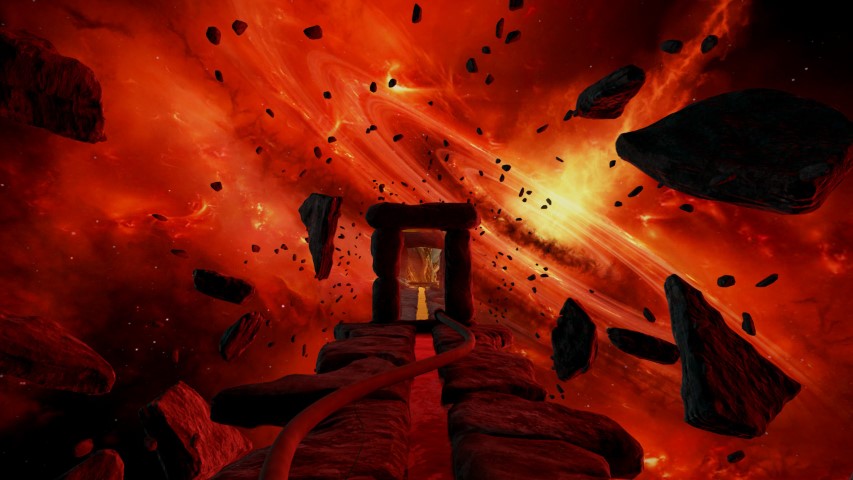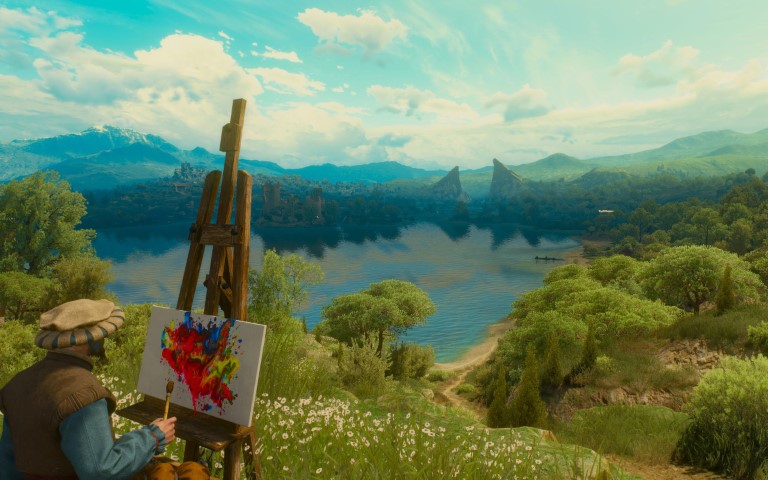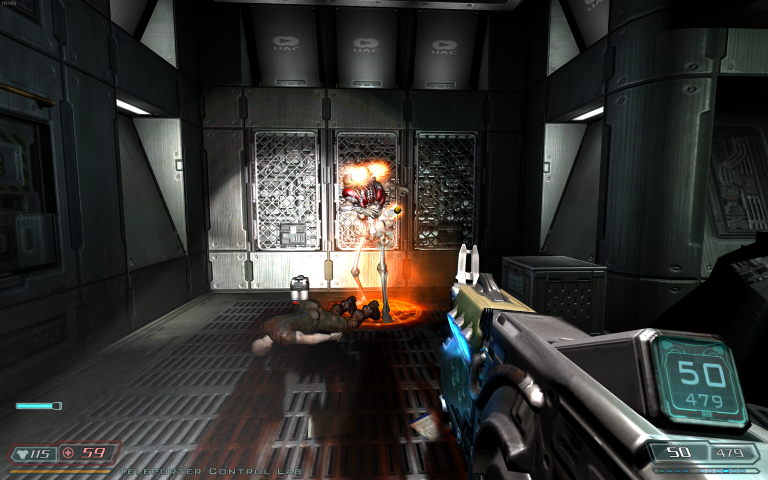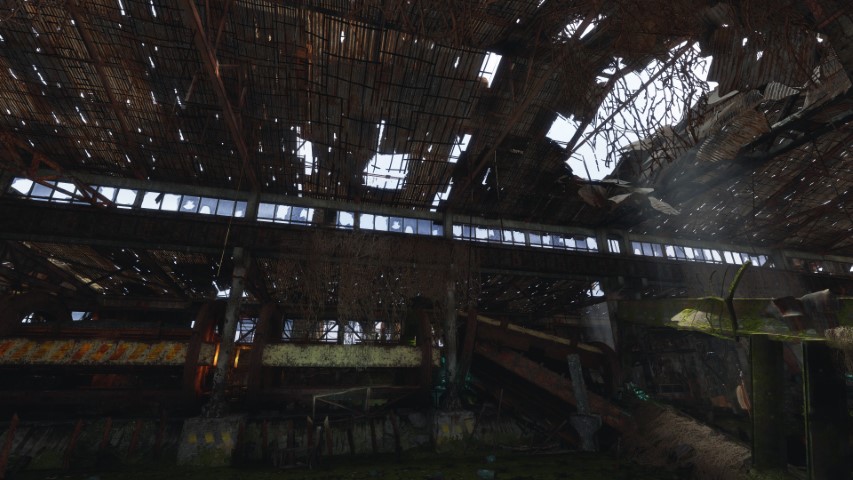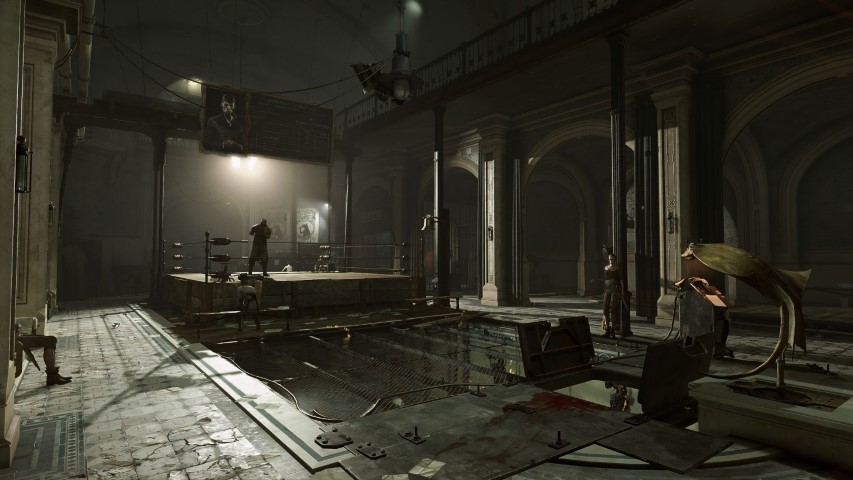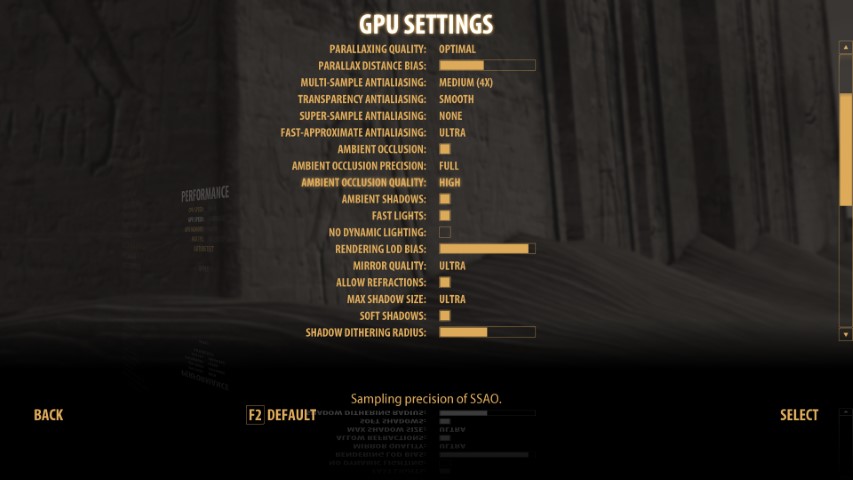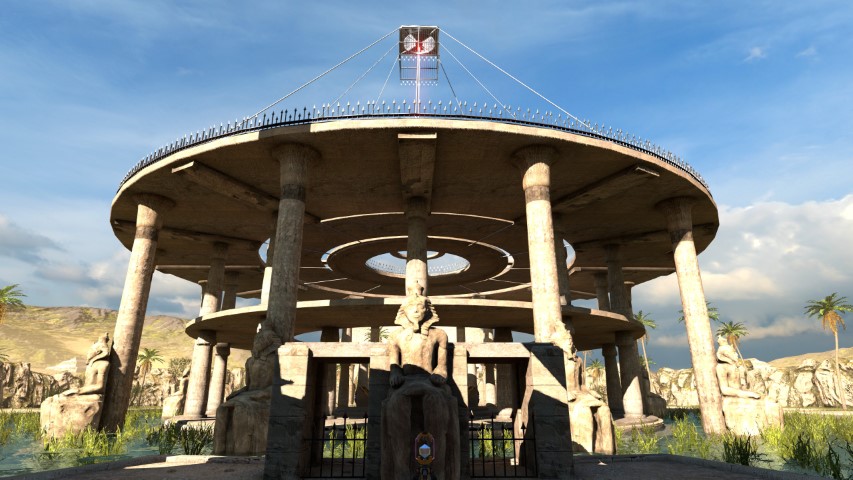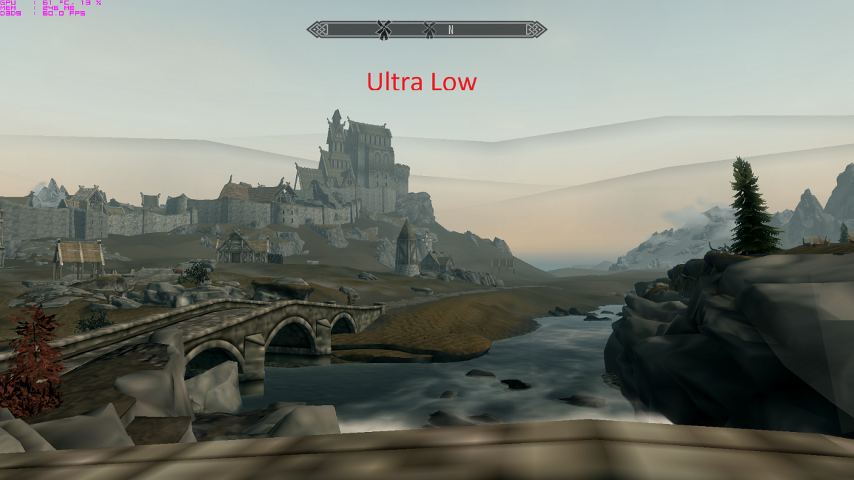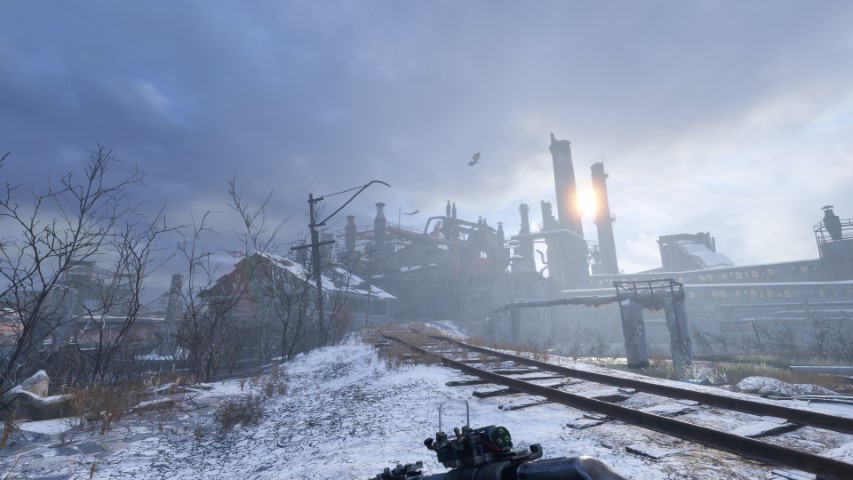
Recent videos by popular youtubers as well as the ever popular “tweak guides” for game graphics have once again started the topic – why do we even use or need the highest settings in video game graphics, especially if the setting one step down is almost as good? Do these settings just ruin optimization? Why don’t developers outright remove them from games, who needs something the average person cannot use? Are gamers actually missing out much, especially with the current state of the hardware market?
Well today we will be exploring the pros and cons and specifics of Ultra settings in video game graphics, from a broad point of view.
What exactly are these so called “Ultra” settings?
Ultra-settings are usually the highest possible graphical preset in most games. Sometimes the name may be different, for example Extreme, Very High, Nightmare, Super, Highest Quality etc. but the concept is always the same – as high as the settings menu may go, and the pinnacle of what the game can achieve without modding or config file tweaks.
In most games Ultra tends to be an offshoot of the high settings menu, which is what most multiplatform titles and many PC exclusives consider to be the actual, main vision the developers had for the game. In a sense they are “bolted on” and feature higher levels of detail, superior internal textures for certain effects and so on.
For an easy example, imagine that the resolution of a certain screen space reflection effect seen on a puddle is half resolution on a game’s High preset. Now, that would generally look pretty good all things considered, and perform quite well. The Ultra preset would likely upgrade that to a full resolution reflection, for a slight gain in visual fidelity but a high loss in performance.
“Ultra-settings are for screenshots, high is for gameplay”
A popular saying over the past few years is that for smooth gameplay one should aim for the “high” preset, and use Ultra only for screenshots, unless the computer’s performance is high enough to trivialize the distinction. That is actually true for the majority of games. Some very rare exceptions exist where the upgrade in visuals may be high enough to matter, or inversely, a drop to “Medium” settings may be even better for smooth performance, but those exceptions prove the rule.
With that said, not all settings have the same scaling of rendering time to visuals. Usually, textures and anisotropic filtering are perfect picks for a player to max out since they are quite cheap on the GPU’s rendering pipeline and their visual effects are very easy to spot. So as long as one has the VRAM and at least OK levels of bandwidth – go for ultra-textures! But for most other settings, the optimal tends to be High or Medium settings.
Why is it that my brand-new PC can’t sometimes crush Ultra in older titles?
Modern GPUs and CPUs are objectively faster at almost every single thing compared to their older counterparts. However, the degree to which any individual metric may have advanced over time is different.
For example, The Witcher 2 released with an extremely demanding Ultra-class option for motion blur. The way its method for achieving filmic motion blur works is through some amount of compute and obscene amounts of bandwidth. While bandwidth, and effective bandwidth have increased dramatically compared to GPUs’ from 2011, it hadn’t increased by as much as the developers expected nor by as much as compute or rasterization had increased. This means that this specific setting, while possible to enable on modern hardware, is still super demanding unlike the other options. Inversely, tessellation in a game like Crysis 2 (Original) is now fairly easy for modern GPUs’ and the once GPU-breaking Ultra-tier setting is actually comparatively cheap to enable.
… But we should still demand for Ultra settings.
While Ultra settings may be considered over-the-top or even outright useless for the vast majority of players when the game releases, they are actually a good thing. We should ask of games to have real Ultra settings that are extremely demanding, nigh impossible to run even with top end hardware of today. Why?
Well, it’s simple – hardware advances. DOOM 3 at its highest settings used to be nigh impossible to run.. It was the same for Metro 2033 too. Even The Witcher 3 and GTA V were demanding titles in their day. All these games looked amazing on their “High” presets and were definitely a good way to experience the titles when the hardware got faster. Now and in the future, running said games or many other previous super-heavyweights is easy. The 5-10% improvement in visuals for 30 to 50% lower performance are now speed bumps for modern GPUs’ and CPUs’.
For future gamers or for people who like to revisit the games they enjoy, we should definitely demand that developers to keepadding these options. Maybe it isn’t the wisest way to play the game when it launches, fair enough, but long-term it is good for both gamers and the games themselves.
Ultra Settings can trailblaze more experimental technology!
Crysis 1 is an example of a game where its High preset was actually extremely good looking, but Very High (its maximum) was noticeably better looking still. A lot of that was down to the inclusion of the (at the time) experimental forms of Ambient Occlusion that some games were playing around with.
While on balance it was still better for most 2007-2008 era gamers to use the Medium or High presets, these experimental and somewhat imperfect early implementations seen on the game’s highest preset ended up helping future game development and GPU development too, even if just a bit. Ultra settings should be where developers are allowed to experiment and push the envelope even if the performance tanks for tiny gains.
Never judge a game’s optimization on its Ultra preset!
One thing that is currently happening is for gamers to call any and all hardware to run games unoptimized. Make no mistake, such a beast as an unoptimized game exists, it is real… but it isn’t nearly as prevalent as people make it out to be.
Red Dead Redemption 2 or Cyberpunk 2077 for example – their settings menus are vast and somewhat complex. The games use Vulkan and/or DX12 and make good use of multicore CPUs’. They do not use the full feature set of modern hardware (no modern game does), but they are not poorly optimized titles. They are just super demanding (and buggy or unfinished as was the case for CB 2077) and their many settings are brutal on hardware. Using more sane, medium/high settings, one can see that the games actually perform fairly reasonably for their requirements all things considered.
In my honest opinion, that is how game optimization should be judged. Not with the decadent, often times screenshot-worthy Ultra preset but the far more balanced options right below it. The calls for optimization by many gamers have gotten so extreme that certain developers sometimes hide their actual highest options in other menus or even in the game’s config files just so as to not get attacked for simply pushing the boundary. This should not be happening – it is silly and self-defeating for both gamers and the developers too.
In Serious Sam titles, Ultra looks amazing but it isn’t the actual max settings as can be seen above.
Of course – developers, make sure the engines utilize resources properly and do try to optimize your games. I may defend extremely hard to run settings for the future, but that ain’t no excuse for sloppy work!
Modern games have strong technical graphics already!
Long gone are the days of “Low” being ‘potato’ mode. In the vast majority of AA, AAA, and even Indie games, Low options actually look decent. Obviously not as good as the higher preset and some developers take it too far by disabling effects or features (instead of just toning them down) but even then, the games look good. Same obviously goes for Medium and High settings which in most titles are outright gorgeous by default, even on massive 4K TVs!
For advanced users, mixed settings are where the truth is.
If someone is feeling a tad more adventurous, experimenting with the game’s options menu or at worst – config files would be a good idea. One of the things I recommend above for people with enough VRAM is to outright use High or Ultra textures and to pair that with the highest tiers of anisotropic filtering. That alone can often massively improve a games visuals even on the otherwise Low settings. Add in … perhaps enabling some levels of dynamic lighting, maybe going for just medium shadow level of detail if the game doesn’t benefit too much from it, dabble in some light Ray Traced effects but not enabling ones that don’t matter much to visuals etcetera. The end result may actually be 85% of the visuals of the absolute highest possible settings… at 50% the cost!
There is nothing shameful about not playing on the highest settings.
For some users, it is a source of pride (somehow) to play PC Games on the highest possible settings, with their spanking new Toxic RX 6900 XT and 4K resolutions. Lowering things even one iota is seen as a step back or a compromise for the developers intended vision or even decline into console gaming!
Even custom potato mode is fine… but it actually even looks somewhat cool with how funky it is, in my opinion at least!
Obviously, this is silly. Just because you have an amazing GPU, it doesn’t mean all modern games will bend down for it, and the developer’s vision is as explained previously – usually based on the High Preset. Console are more often than not using very mixed settings set by the developers to maximize visuals on a per scene basis, so in the vast majority of cases, the High preset is actually nigh universally higher than them. But even if it wasn’t – so what? The game will likely still look great… the beauty of PC Gaming is not in the pretty graphics but in the choice and power over the games. No one should ever feel ashamed about playing even on Low – as long as they are enjoying the game itself!
Ultimately, I personally see Ultra settings as something welcome in most games and I am absolutely fine with them being extremely demanding, obscenely so even. Where my computer of today crumbles, my computer of tomorrow will win. Until then, I will just enjoy the favourite games with the smooth, almost as pretty High (or Medium) preset with Ultra textures.
The articles content, opinions, beliefs and viewpoints expressed in SAPPHIRE NATION are the authors’ own and do not necessarily represent official policy or position of SAPPHIRE Technology.







